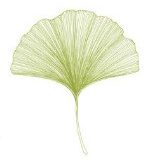Before we begin, let’s clear up one issue. Is it spelled Crape Myrtle or Crepe Myrtle? The scientific name for the plant is lagerstroemia crape myrtle, the traditional Southern spelling is Crepe Myrtle (because the flowers resemble crepe paper). As central Virginia is still Southern (in spite of what some in the deep South may think), I’ll use Crepe Myrtle here.

Crepe Myrtles are a wonderful staple in the central Virginia garden. They are drought and heat resistant, and their beautiful summer flowers make them ideal choices, even in the driest, or as we’ve seen this past year the wettest, of seasons. In recent years, breeders have developed even hardier forms so that gardeners above the Mason Dixon line can grow them as well, and an increase in color choices and disease resistant forms has made them a staple for both commercial and residential use.
I have a perpetual smile on my face as I drive down Monument Avenue in Richmond in the summer and see the Crepe Myrtles because they are usually blooming when nothing else is showing color. And, when the petals fall it is like a refreshing summer snow.
Note that they come in only in colors ranging from red to lilac, so there are no blues, yellows or oranges, yet. Don’t be fooled by a tag that has an orange look to the blossom – that may be a butterfly bush instead!
It is also interesting to note that Crepe Myrtles are not natives plants, thought they seem to grow everywhere you look. They were originally brought to America in 1790 by a French botanist named Andre Michaux. He grew them in his garden outside of Charleston, SC where they thrived and became a symbol of summer in the South.
Botanists refer to the Crape Myrtles in the U.S. as Lagerstroemia Indica, which grows naturally in China, Korea, Japan and India. That there are over 50 other varieties growing in warm regions around the world is amazing. The differences must be hard to see with the naked eye! In case you are wondering, non-Botanists or nurseries may refer to them simply as the Common Crape Myrtle.
Most Crape Myrtles seem to want to grow to an average height of between 15 and 20 feet. Natchez, a magnificent tree when fully grown, will reach a height of 30 feet. Catawba will max out at between 8 and 10 feet. It’s best to know your space and how much height you want before selecting a Crepe Myrtle. No need to stress the tree or yourself with a surprise.
Which brings me to what is now commonly known as Crepe Murder. Call it excessive pruning, amputation, disfiguring, murder – it all results in the same thing. Ugly, knuckled branches that mar the tree’s shape.
Crepe Myrtles need to be pruned – correctly. It shouldn’t be noticeable. The purpose is to enhance the natural habit of the tree so it is elegant, easy to maintain, and prevents stressing out the tree.
According to Southern Living Magazine, decapitating Crepe Myrtles is simply a copycat crime. People do it because their neighbors did it, or because a commercial landscaper did it (likely because he’ll get more money the “busier” he is – and don’t get me started here on mulch volcanoes and that rip-off).
The truth of the matter is, if your tree is too tall, then you picked the wrong tree. Pruning a Crepe Myrtle to reduce its height is a battle you’ll never win, and it stresses the tree so that it is less disease resistant and is putting so much energy into trying to survive that you may not get the blooms you’d like. Pruning a tree for more blooms simply puts those blooms closer to the ground, it doesn’t mean there are more of them, likely less.
The great thing about Crepe Mytles is that they transplant easily and you can replace it with a shorter variety. Shrub versions, like Hope, Centennial or Prairie Lace grow to only 3-4 feet tall.
So how should you prune your tree?
Cut off the suckers at the base at the surface of the soil.
Cut off any cross branches that might rub against another. A vertical tree is prettier than a floppy tree.
Remove any limbs flush to the trunk. A stub will result in new shoots where you left the stub.
If you have, sorry, butchered your Crepe Myrtle and would like to try and save it, here is a link to a video from Southern Living that may help. It won’t happen in a season, but you can restore your tree to its natural beauty with some special pruning and then low maintenance attention. And we all love low maintenance, don’t we?
Every central Virginia garden should have at least one Crepe Myrtle in it (the shorter versions do well in pots, in case your landscape is full). I’ve heard often from friends who visit here in the summer that they are delighted to see so many trees in bloom. I don’t take that for granted. I get the same delight.
